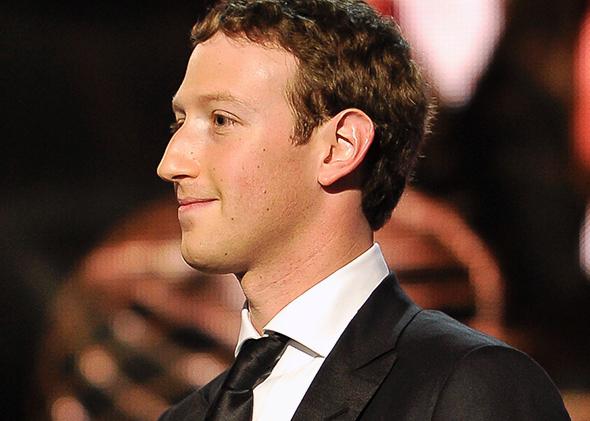I’ve written before about ageism in Silicon Valley. Venture capitalists like their founders young and ambitious; young founders, in turn, hire young employees. It makes sense, from a certain point of view—young people understand young markets. But it’s time to question that last presumption. Why do startups assume teens and twentysomethings are the only audiences that matter?
The media have played a part. For the better part of a decade, the startups making the biggest and most consistent headlines—Facebook, Twitter, and more recently, Snapchat and Yik Yak—have first been hits on college and high school campuses.
Over time, entrepreneurs and journalists took youth appeal—teen appeal, in particular—as an article of faith. Absent any context, the average age of a product’s user base became a proxy indicator for its success. That’s why the media wring their hands about teenagers’ alleged abandonment of Facebook, for instance. Never mind that the company is beating analysts’ predictions and showing healthy revenue growth—it may (or may not) be losing teens, so sound the alarms!
Facebook’s numbers do appear to be graying: According to reports by iStrategyLabs, Facebook’s 13-17 age group declined by 25.3 percent over the last three years, while its over-55 group grew by 80 percent in the same time frame. But there’s nothing inherently wrong with that. In fact, it may be a great thing for a company dependent on advertising revenue.
Facebook has no reason to ignore the $750 billion baby boomer market, and neither do any of the startups trying to become the next Facebook. Our country’s 80 million baby boomers (approximately 42 percent of the population) hold 77 percent of all personal assets and account for half of all discretionary spending. Total disposable income for people over 50 was more than $3 trillion in 2010. Studies by Jupiter Research, Nielsen, Pew, and others show that boomers spend an average of 27 hours per week online—two hours longer than millennials.
There’s gold in all that silver, and a new generation of startups is poised to mine it. They’re rethinking the tired presumption that seniors make tricky customers: that they’re harder to reach, that they’re stuck in their ways. They don’t have the exact same needs as millennials, but new technology can address those needs in new (and lucrative) ways.
“For us, attacking unsexy problems tended to have disproportionate rewards,” Box CEO (and not-yet-30-year-old) Aaron Levie told Entrepreneur recently. “There’s so much attention given to glamorous concepts like photo sharing, video, social media. Instead, go and solve a really hard problem that not a lot of people are paying attention to—whether that’s in health care or manufacturing.”
Health care is an obvious—and, yes, unsexy—need, and at least 66 percent of boomers regularly search online for health-related solutions. RockHealth, a seed-stage accelerator for health startups, has raised backing from heavyweights including Harvard University, the Mayo Clinic, GE, and Bay Area VC firms. It reports that funding for digital health companies exceeded $1.9 billion in 2013, a 39 percent increase over 2012, and a doubling since 2011. At least 186 health-related tech companies raised $2 million or more last year, with more and more of that money coming from early stage deals (seed or series A).
Investment hub AngelList, a bellwether for emerging trends in seed-stage startups, features 4,281 companies in its health care category. These companies have an average valuation of $4.2 million—about 11 percent higher than the site’s all markets average of $3.8 million. Other boomer-friendly categories include nutrition ($4.6 million average), home and garden ($4 million average), personal health ($4.2 million average), and vacation rentals ($3.9 million average). The elder care category has a $4.5 million average valuation, which is 18 percent above the super-sexy games category, 15 percent above fashion, and 12.5 percent above consumer goods.
Y Combinator, the Valley’s premiere startup accelerator, is another leading indicator of entrepreneurs’ ambitions and the VC community’s appetites. Among the graduates of its winter 2014 class, TechCrunch picked boomer-friendly Weave, NooraHealth, and AirHelp as some of its favorites. Weave connects patients with their medical providers. NooraHealth helps families care for loved ones recovering from hospital stays. AirHelp is sort of like an automated complaint center for air travelers. It lets aggrieved customers get refunds after canceled, overbooked, or delayed flights. Mattermark, a research service for private company investors, ranked AirHelp among the most buzzed-about startups in the winter 2014 Y Combinator batch, along with TrueVault, a HIPAA-compliant health care API.
Many of these startups are health-related, and there’s plenty of profit (and social good) to be made in assisting the elderly. But specialized e-commerce could be an even bigger opportunity. Amazon launched its “50+ Active and Healthy Living Store” last year. Smart startups will follow suit, angling for significant slices of the over-50 set’s $3 trillion in discretionary spending.
Building successfully for seniors requires understanding seniors’ tastes, problems, and use cases. I don’t question the ability of enterprising twentysomethings to figure those things out, but they could use some help. If young founders are closer to young markets, then the logic should work in reverse. Older founders, employees, and advisers could bring a breath of fresh air to tech firms approaching the boomer market.
There’s no shortage of boomers ready to get to work. Paul Irving and Anusuya Chatterjee, writing for Forbes, note that nearly half of all entrepreneurs founding new companies in 2011 were between the ages of 45 and 64. And 80 percent of boomers currently in the workforce would be willing to mentor millennials. Founders looking to enlist their insights can turn to, of all places, AARP. The organization recently launched Innovate@50+, an initiative sponsoring research and design efforts for senior-centric products and services. I imagine very few founders, fresh out of college, would brag to their peers about an association with AARP—but maybe they should. Developing for seniors is smart, and smart is sexy.
